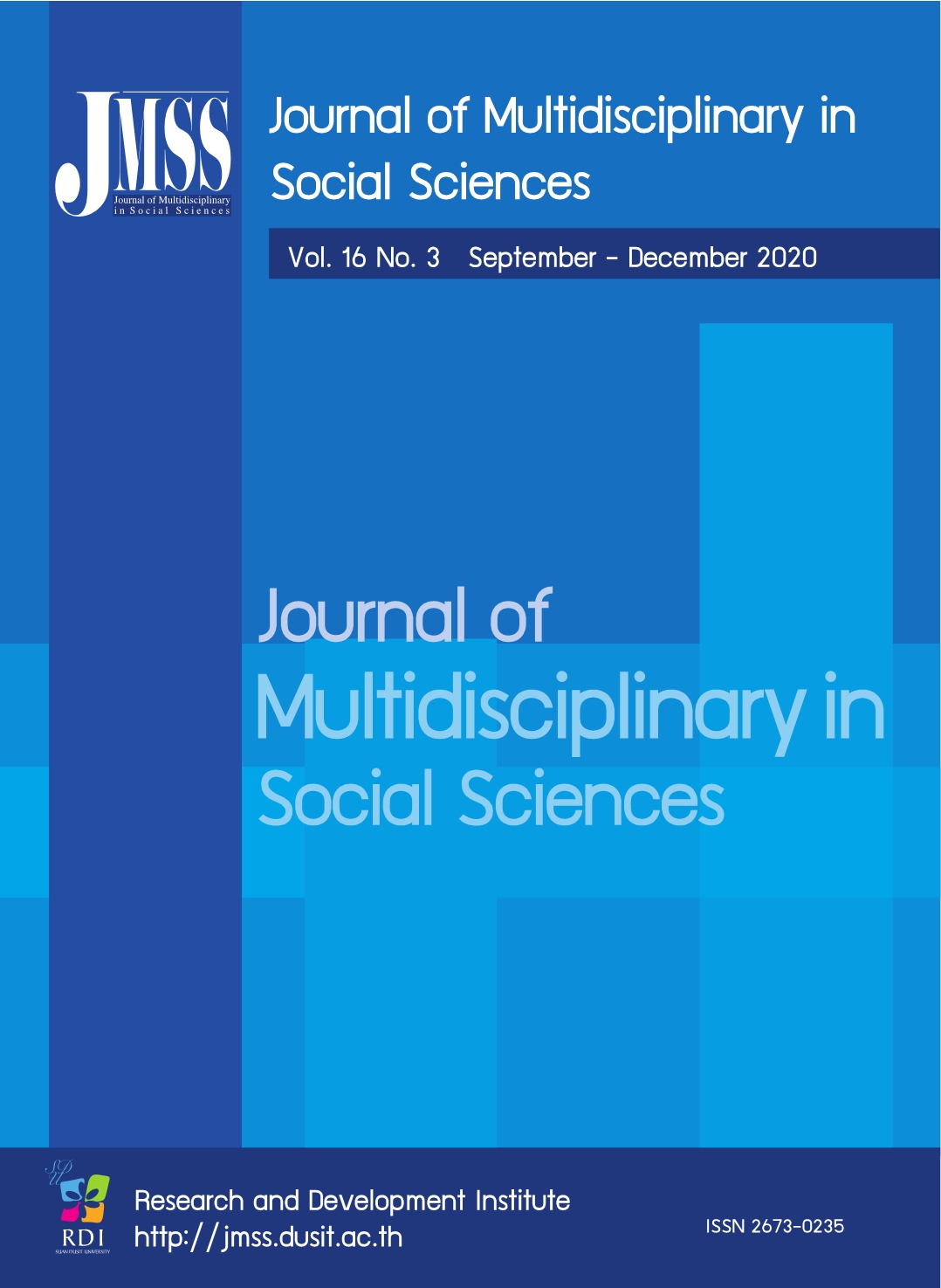Self-Learning Activity Package Promoting Life Skills in Communication Arts Careers for Undergraduate Students at Suan Dusit University
Keywords:
Self-learning activity package, Life skills in communication arts careers, Activity package for undergraduate levelAbstract
This research had the objectives to (1) determine the essential life skills for communication arts careers; (2) develop the self-learning activity package promoting life skills for communication arts careers; (3) study the usage results of the self-learning activity package. The sample used in this research were 24 lecturers and 40 students in Communication Arts Program at Suan Dusit University. The research tools were google form and website for used distributing the whole set of activities and research tools for experts and students, questionnaire of essential life skills for the instructors’opinion, assessment form and questionnaire for the experts’opinion, self-assessment after trying the activity package for students, and satisfaction questionnaire for students. The data were analyzed, using frequency, percentage, S.D. and descriptive writing. The research results showed that (1) The essential life skills determined for communication arts careers were the 3 sets of activity package consist; communication skill, interpersonal relationship skill and making contribution, and critical thinking skill and making decision, consisting of 11 competences, 31 indicators, 10 units and 13 activity plans with, in total, 35 group and individual activities, including the self-tests for during and after the usage of activity package; (2) the evaluation results of the experts was at the highest level, both for the consistency of the activity sets with the life skills and the website design; (3) the usage result of the activity sets demonstrated the ability of students to fully work, with the results of passing the 60% criteria in the second round, which were 72.5% (29 people), 77.5% (31 people) and 57.5% (23 people) for sets 1-3, respectively; (4) the students were satisfied with the content - utility and presentation style at the moderate level, respectively at 3.41 and 3.25.
References
Amonrat, R., Wannara, R., Saksit, R., Suwaluk, H., Chintana, T., Kajitkwan, K., Gritsanaporn, P., Sirima, K., Phuchit, P., Rarinthorn, V., Choosana, C., & Woraphat, C. (2019). Trends in the development of communication arts curriculum heading to the communication labor market in Thailand. Suan Dusit Graduate School Academic journal, 15(3), 205-216.
Baliphat, S., & Chaiwan, A. (2016). Relationships Among R&D Expenditures, ICT Investment and Economic Growth of Thailand. CMU Journal ECON, 20(2),41-53.
Centre for Teaching Excellence, University of Waterloo (2020). Self-Directed Learning: A Four-Step Process. Retrieved January 2, 2020, from https://uwaterloo.ca/centre-forteaching-excellence/teaching-resources/teaching-tips/tips-students/self-directed-learning/self-directedlearning-four-step-process
Department of Mental Health. (1997). Handbook for Life Skills Administrators in Schools (2nd ed.). Nonthaburi:
Department of Mental Health. Global Education Innovation Initiative. (2020). What is 21st century Education?. Retrieved January 2, 2020, from https://globaled.gse.harvard.edu/21st-century-educationaction
Hammond, M., & Collins, R. (1991). Self-directed learning: Critical practice. London: Kogan Page Limited. Jeerungsuwan, N., & Thaweesaksri, K. (2012). The Impact Analysis of Information and Communication Technology. Journal of Humanities, Kasetsart University, 19(1),146-162.
Kim, R., Olfman, L., Ryan, T., & Eryilmaz, E. (2014). Leveraging a personalized system to improve self-directed learning in online educational environments. Computers & Education, 70, 150-160.
Knowles, M. (1986). Using learning contracts: Practical approaches to individualizing and structuring learning. London: Jossey-Bass Publications.
Mudlam, S., Seree, P., Apinanthavej, S., & Yongyuan. B. (2018). Effects of the Enhancement Program Life skills towards life skills of the 5th grade students with low academic achievement under the Bangkok Metropolitan. Journal of Education Srinakharinwirot University, 19(1), 193- 224.
Naksamrit, S. (2018). Development of university life skills of Rajabhat University students. SDU Research Journal, 14(1), 41-54.
OBEC. (2011). Guidelines to life skills development for integrated teaching and learning of eight learning groups in the basic education core curriculum, 2008. Thailand: Printing House: Agricultural Cooperative Assembly of Thailand.
Office of the Higher Education Commission. (2010). 15th Long-term higher education plan framework No.2 (2008-2022). Bangkok: Chulalongkorn University Printing House.
Sakuldilok, P. (2017). Driving society through new media in the era of globalization. Journal of Humanities and Social Sciences, 25(49), 59-77.
Simpson, O. (2000). Supporting students in open and distant learning. London: Kogan Page Limited.
UNESCO. (2001). Life Skills in Non-formal Education: A Review. New Delhi: India
UNICEF. (2012). Global Evaluation of Life Skills Education Programs. NewYork: USA.
WHO. (1997). Life Skills Education for Children and Adolescents in schools. Geneva: World Health Organization.
Downloads
Published
How to Cite
Issue
Section
License

This work is licensed under a Creative Commons Attribution-NonCommercial-NoDerivatives 4.0 International License.








